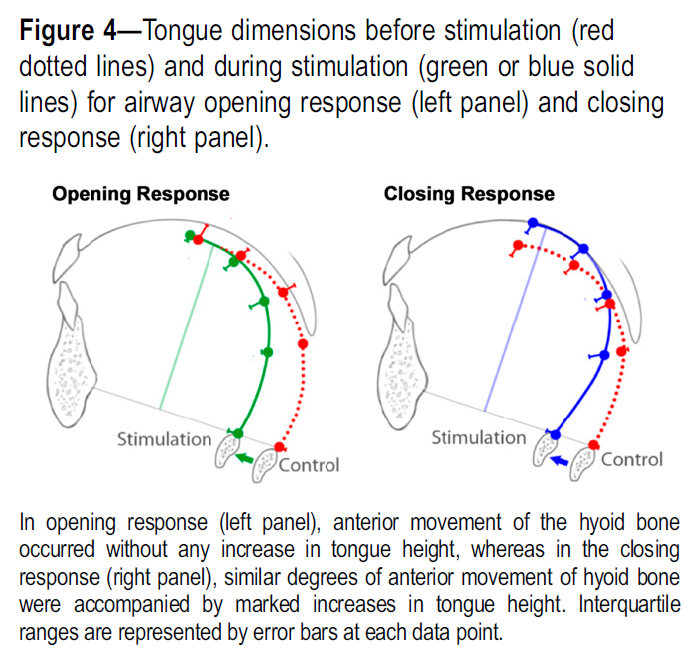Hypoglossal nerve stimulation is an important treatment option for patients with moderate to severe obstructive sleep apnea who cannot tolerate positive airway pressure therapy (for example, CPAP). The only currently-FDA-approved technology is Upper Airway Stimulation (Inspire Medical Systems, Golden Valley, MN), but multiple technologies are in human clinical trials or under development. One of these is the Aura6000 (LivaNova, London, United Kingdom).
The Aura6000 involves placement of the stimulation lead end on a portion of the hypoglossal nerve that includes all components of the nerve, enabling it to stimulate different parts of the nerve by having different electrical contacts positioned at various points as the lead is wrapped around the nerve. The electrical contacts that are selected for actual stimulation are those that appear to produce the most-favorable tongue movement. Typically, 2-3 electrical contacts are selected as producing favorable tongue movement.
The April 2023 issue of the Journal of Clinical Sleep Medicine reports on a study of 12 individuals implanted with the Aura6000. The investigators performed detailed analyses of airflow during stimulation of different contacts and also performed ultrasound to look at tongue movement during stimulation. Among the 12 study participants, they found 8 electrical contacts for which stimulation opened the airway and increased airflow and 7 electrical contacts in which the opposite occured. It is unclear why they only found so few electrical contacts with these responses among 12 study participants.
What about changes in tongue shape?
The findings regarding tongue shape are most clearly shown in the paper’s Figure 4 below. In those with airway opening, they found that the entire tongue moved forward, with advancement not just of the tongue base (the lowest part of the back of the tongue) but also the junctional tongue (the portion that lays agsinst the soft palate). In contrast, those with airway closing had advancement of the tongue base but elevation of the junctional tongue against the soft palate; the thought is that this may open the Tongue Region but close the Palate Region.

What does this mean?
Overall, there are a few potential conclusions to make:
- Why were there so few study participants with electrical contacts that had clear airway opening? The presence of only 8 makes one question whether the Aura6000 will be effective in the treatment of obstructive sleep apnea. It is straightforward to understand why there could be electrical contacts that produced airway closure, but the presence of so few electrical contacts with airway opening is concerning.
- Does placement of the stimulation lead on the proximal hypoglossal nerve (with all branches) limit the amount of full anterior movement of the tongue, suggesting that this approach will never work well?
- Does stimulation of the distal hypoglossal nerve (as with Upper Airway Stimulation) produce a similar variable pattern of tongue movement, or is the movement with stimulation there more consistent?
- Is stimulation of the distal hypoglossal nerve more or less likely to produce favorable movement of the tongue – both the tongue base and junctional tongue?
I have actually written to the senior author of this paper to ask whether they are planning to do the same study with individuals implanted with the Upper Airway Stimulation system. I will keep you posted.




12 − 8 =